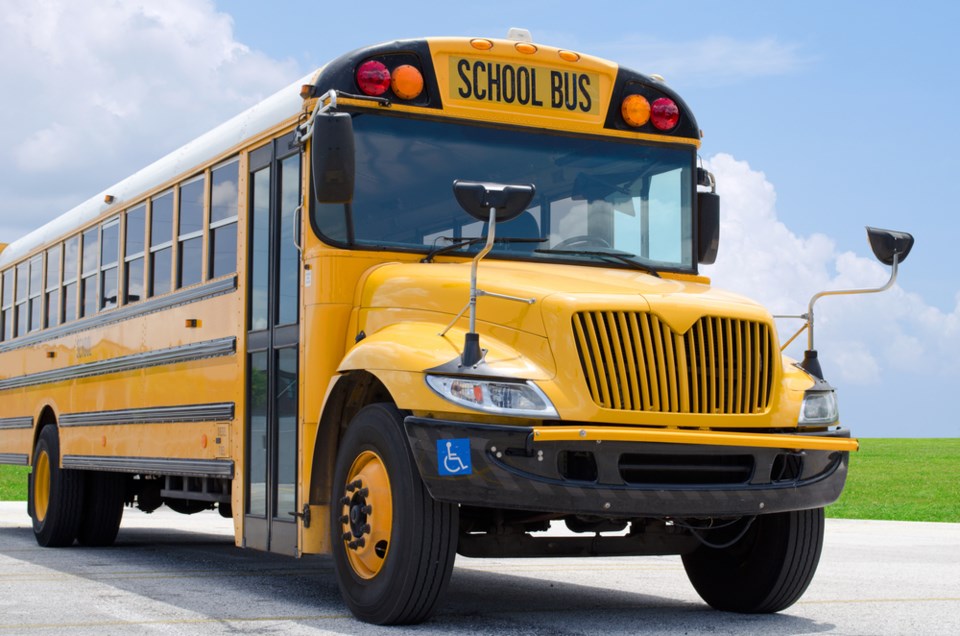With buses in Prairie South School Division travelling more than three million kilometres every year, the organization is looking to attract more regular and spare drivers to keep those wheels rollin’.
There were 106 regular bus drivers during the 2021-22 school year, compared to 113 operators during the 2017-18 year, according to the 2021-22 transportation accountability report presented during the Feb. 7 board meeting.
Furthermore, there were 49 casual (spare) drivers last year, compared to 93 operators during 2017-18, a decline of nearly 50 per cent.
Meanwhile, the division transported 2,655 students last year, with buses travelling 18,087 kilometres daily on 106 routes throughout 19 communities.
This is equivalent to driving across Canada two-and-a-half times daily.
The transportation department is working with human resources to find ways to retain its spare drivers and build up that group so it doesn’t have to cancel regular routes, manager Todd Johnson told trustees.
Furthermore, the department provides regular training to new drivers, with the safety officer providing pre-trip circle-check and in-bus training, he continued. The officer meets with drivers for a minimum of three hours, while operators are encouraged to practice driving on their own before the road test.
The accountability report showed that Prairie South trained 20 new drivers last year, offered refresher training to 15 operators, recertified 40 drivers and had 40 operators take First Aid recertification classes.
The department plans to have more contact with new drivers by encouraging them to continue studying and to work with more experienced drivers to ensure they at least become casual drivers, Johnson said.
“We’re really trying to take a proactive approach to this and continue to engage the people that are applying. And hopefully, get more people to apply as well,” he added.
Numbers of students
The division transported 908 urban students on 27 routes in Moose Jaw and drove 1,747 rural students on 79 routes throughout the division.
In 2021-22, the average urban ride time was 15 minutes and the average rural ride time was 33 minutes. In comparison, those numbers were nine minutes and 35.5 minutes, respectively, in 2017-18.
Johnson noted that 21 routes are dedicated solely to transporting pupils to Lyndale School, while four are committed to Mossbank School.
Charter trips for curriculum and sports activities restarted last year after the province lifted pandemic restrictions, he continued. The data showed there were 1,301 charter trips in 2021-22, compared to 18 in 2020-21 and 958 trips in 2019-20.
“We’re predicting that the numbers will be right around that 2017 number (1,838 trips) at the end of this year … ,” said Johnson.
Number of buses
The data showed that the bus fleet consists of 145 units, with 106 vehicles used on regular routes and 39 units used as spares. In comparison, there were 155 vehicles in 2017-18.
The age of buses is also a factor in attracting and retaining drivers since some older buses may not have adjustable seats or telescopic steering wheels or pedals, Johnson said. Purchasing new buses is attractive since people want to sit in — and operate — new vehicles.
Data shows that the oldest buses in Prairie South’s fleet are 16 years old; there are 28 such vehicles.
Data also showed that the department conducted 1,024 inspections and repairs last year, while there were 17 vehicle accidents during that time, with the division assessed $700 in damage costs. Of note, six incidents were because the other driver was at fault and five incidents happened when the bus struck a fixed object.
Trustee inquiries
One trustee asked whether the division reimburses parents when forced to drive their kids if there’s a bus cancellation and whether people take advantage of that opportunity.
Johnson replied that the department makes parents aware of that opportunity by sending them forms to fill out if it must cancel buses for long periods. About 70 per cent of parents complete the documents.
When asked about the proposed in-house driver training program, Johnson explained that having knowledgeable on-site people is a selling point to attract and retain new drivers. Furthermore, it gives the division a chance to engage with people, send them training and reading materials, provide road tests, conduct in-person safety walks and then drive with them.
The goal is to bring everyone together to train on-site, which could help people learn from others while also creating relationships, he continued. PSSD would reimburse them after they’ve passed their road test, while it would only hire them once they’ve attained their licence.
As for casual drivers, the department attempts to attract people to places with no spare operators, Johnson added. For example, there are seven spares in Moose Jaw but none in Mankota. Therefore, the department aims to have training hubs so drivers can cover places without extra operators.
The next PSSD board meeting is Tuesday, March 7.




